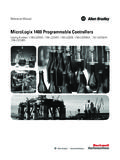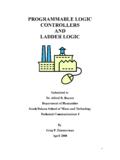Transcription of Digital Power Monitor Installation and Operation
1 Unipower HPL110.. D i g i t a l P o w e r M o n i t o r Installation and Operation True Motor Power Monitor High Trip Alarm Low Trip Alarm Digital Display Start and Trip Delay Timers Typical Applications Pumps Fans Conveyors Crushers and mixers Broken belt detection Listed Contents 1 System Overview 3. 2 Functional Description 4. 3 Typical Applications 7. 4 System Configuration 8. 5 Electrical Installation : 10. 3-Phase Power Connection 1-Phase Power Connection Alarm Relay States Alarm Integration Reset Function 6 Specifications: 13. Technical Specifications DIP Switches 7 Mechanical Installation 14. HPL110. Current Transformer Optional Mounting Accessories and Enclosures 8 Programming 16.
2 9 Troubleshooting 19. 10 Set-Up Log Sheet 20.. ! WARNING: Dangerous voltages are present in motor control panels; Installation MUST BE CARRIED OUT BY QUALIFIED. PERSONNEL.. ! WARNING: Improper Installation or programming can cause damage to the unit and/or result in ineffective protection and/or nuisance tripping. 2. 1 System Overview The Unipower HPL 110 advanced Digital Power Monitor is a member of the Unipower family of Intelligent Power - Control Units designed for protection and control of motor driven mechanical systems. The HPL 110 measures true Power consumption of 3-phase AC motors (single phase versions also available).
3 And displays consumption as a percentage of selected Power range. Power consumption (kW) is calculated from the formula: P = 3 x U x I x cos j The display shows Power in units of %kW which represent the percentage of full load Power range for the unit. Control functions comprise two independent and programmable trip functions: Low Power Alarm - for example, to stop a pump in the event of dry-running, and High Power Alarm - for example, to stop a feeder when blocked. The alarm functions activate a single alarm relay which may be used to control the motor being monitored; to trip a shut-down in the event of either a high or low Power alarm.
4 The HPL 110 may be configured to Monitor any size motor either with the internal current transformer for applications up to 8A or with an external CT for applications above 8A. The HPL 110 provides consistent sensitivity across the complete motor load range making it ideal for low trip applications where amp meters are ineffective. In addition, the HPL 110. measurement principle allows it to be used on non-sine shaped loads such as Variable Frequency Drives. The Digital design of the HPL 110 including 3-key programming, 3 digit display, Max/Min Peak Hold, Program Lock and Power Down Alarm Block functions make it very easy to use.
5 3. 2 Functional Description The Unipower HPL 110 may be used either for monitoring applications - to protect process equipment - or for control applications - to control secondary process functions. Monitoring Example for Machinery Protection A typical Power vs. Time graph for the HPL 110 is shown in Figure with the Y-axis showing Power P in units of %kW and the X-axis showing time. At time 0, mains Power is turned on, the HPL 110 unit is energized and the alarm relay changes state to the on condition. At time 1, the motor is turned on and the load immediately surges due to the starting current inrush before settling to a steady value at time At time 8, this example shows Power rising above the L1 Max.
6 Limit which triggers an alarm resulting in the motor being switched off at time A continuation is shown starting at time 20 where the motor load drops such that it falls below the L2 Min Limit at time 22. An alarm is again triggered after the delay timer expires resulting in the motor again being shut down at time 23. P (%) P = f (t). 100%. Tr1. L1. Max. Limit Tr2. L2. Min. Limit Ts 5%. 0%. t 0 1 2 3 4 5 6 7 8 9 20 21 22 23. Power On Relay On Motor On F i g u re 2 . 1. 4. The HPL110 functions in these examples are as follows: P- Power %kW: The display shows true Power in units of % of full scale for the HPL 110 as installed.
7 Ts - Start Delay timer : Ts is used to delay the start of active monitoring until after the start surge is completed. The HPL 110 assumes that the motor is OFF when measured load - %kW - is below 5% full scale. The Ts timer starts when the load reaches 5% and monitoring is disabled for the duration of the Ts period. Ts is programmable in the range to seconds. On conclusion of the Ts period, monitoring becomes active. If P drops below 5%, monitoring is immediately disabled and a new Ts period will start as soon as load again reaches 5%. L1 - Max. Limit: Max. alarm limit programmable in the range 5% to 100% / OFF and used in conjunction with the Tr1 Reaction timer .
8 A Max. Limit alarm is tripped if P exceeds L1 for a period Tr1. Tr1 - Reaction timer : Used in conjunction with the L1 Max. Limit and programmable in the range to seconds. Tr1 is time for which the P must remain above the L1 Max. Limit before an alarm is declared. If P falls below the L1 during the Tr1. timer period, the timer is re-set to zero. Note: if Tr1 is set to seconds, actual reaction time will be one cycle or approx. 16 msec. at 60Hz and 20 msec. at 50Hz L2 - Min. Limit: Min. alarm limit programmable in the range OFF / 5% to 100% and used in conjunction with the Tr2 Reaction timer . A Min. Limit alarm is tripped when P remains below the L2 Min.
9 Limit for a period of time Tr2. Tr2 - Reaction timer : Used in conjunction with the L2 Min. Limit and programmable in the range to seconds. Tr2 is time for which the P must remain below the L2 Min. Limit before an alarm is declared. D- Max. Level: If the D up arrow key is depressed while the HPL 110 is in Monitor mode, the display will show the maximum load - in %kW - experienced since the last Ts. - Min. Level: If the down arrow key is depressed while the HPL 110 is in Monitor mode, the display will show the minimum load - in %kW - experienced since the last Ts. 5. Control Example While monitoring for machinery protection is the primary application for the HPL 110, it is also suitable for simple two-point control regulation applications by using the Hysteresis function included in the unit.
10 A possible control example might be where the HPL 110 is monitoring the Power consumed to mix a slurry and the relay output is used to add liquid if the slurry becomes too viscous. This is shown graphically in Figure Power surges when the motor is switched on and the Ts function inhibits monitoring until the motor settles at time Once Ts is completed, the high Power alarm becomes active and a hysteresis band (programmable) is shown under this alarm level. At time 5, the mixing Power rises above the L1 Max. Limit and, after the Tr1 trip delay times out, the alarm is activated and the relay switches. In this example, the relay controls the addition of liquid to the slurry and the Power gradually drops as liquid is added until at time 7, it has fallen below the hysteresis band for the L1 Max.






